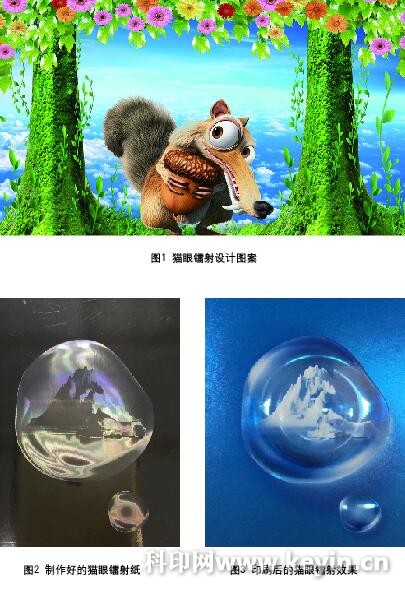
Privacy statement: Your privacy is very important to Us. Our company promises not to disclose your personal information to any external company with out your explicit permission.

Cat eye laser effect
The cat's eye laser pattern was first developed by a US company using 3D lens optics, using laser laser engraving technology to create a 3D depth of field and convex mirror effect. Because the pattern is novel and beautiful, a company in China first purchased the template of the graphic, which is the master for laser film imprinting, which can be used for mutual reproduction of negative and positive images. At present, the laser effect of cat eyes made by some enterprises in the market is not clear enough, and a virtual circle around the circle appears, which is caused by repeated copying.
Cat eye laser paper production process
To achieve a cat's eye laser effect on a color box package, it is usually necessary to make cat eye laser paper. The mass production process of cat-eye laser paper is: making laser molding plate → mechanical molding laser film → vacuum spraying → laser film → paper → positioning and cutting sheet.

1. Making laser molded version
The laser molded version is specially made of special metal foil. Because the pattern surface is mainly electroplated with metal nickel, it is also called nickel plate in the industry.
At present, the laser engraving technology is commonly used to complete the engraving of graphic information on the nickel plate. A high-energy laser beam is generated by a laser generator, and the nickel plate is locally irradiated by a pattern of left and right array engraving or vector contour cutting, so that the surface is instantaneously melted or even vaporized, and the substance on the surface of the nickel plate is chemically and physically generated. Changes show signs, and the desired text, symbols and patterns are formed according to pre-design requirements. The laser beam is focused from millimeters to micrometers. The heat affected zone is small and the processing is fine, which can not be achieved by some conventional methods. At the same time, the process of laser laser engraving is automatically controlled by the computer. The engraving information is only related to the design content. As long as the computer engraving system can recognize the design artwork, the information can be accurately restored on the surface of the nickel plate to complete the engraving of the laser pattern.
Considering the processing steps of positioning, flattening and printing overprinting, the cross-cutting line must be complete when engraving the nickel plate. The mouth and pull gauge are designed with stepped arrow and cutting line. At the same time, the positioning electric eye needs to be engraved. A recognizable cursor (usually a disc with a matte effect). The engraved nickel plate is placed under a magnifying glass and the layout must not have any defects.
The nickel plate should be very careful during use. No minor collisions can occur during the maintenance of the plate. The surface should not be splashed with oil or water. Otherwise, it can only be scrapped.
2. Mechanically molded laser film
The laser film generally selects two materials of OPP and PET film as the substrate. The mechanically molded laser film directly presses the laser embossed plate onto the glued film substrate at a high temperature to form a light refraction point of varying heights and sizes.
The laser molding machine is mainly composed of a coating glue unit and a UV molding unit. The coating glue is the first process and is generally applied by a gravure process. The thickness of the rubberized layer directly affects the depth of field effect of the cat's eye. The thicker the rubberized layer, the stronger the depth of the cat's eye laser pattern. The thickness of the glue layer is determined by the product design, generally between 0.15 and 0.30 mm. Subsequently, a UV molding process is carried out, and under the irradiation of UV light of different wavelengths, the surface of the laser film exhibits a pre-designed pattern. It should be noted that the mechanically molded laser film needs to control the combination of the amount of glue applied and the molding speed. The general molding speed is 30 to 50 m/min.
May 22, 2024
E-mail naar dit bedrijf
May 22, 2024

Privacy statement: Your privacy is very important to Us. Our company promises not to disclose your personal information to any external company with out your explicit permission.

Fill in more information so that we can get in touch with you faster
Privacy statement: Your privacy is very important to Us. Our company promises not to disclose your personal information to any external company with out your explicit permission.